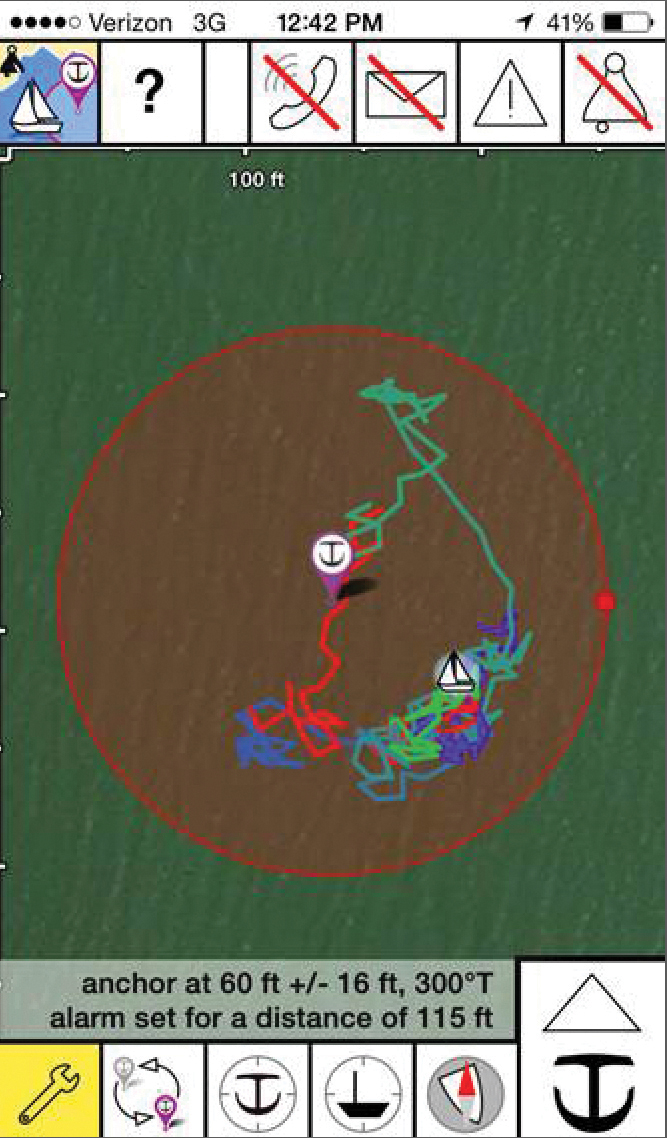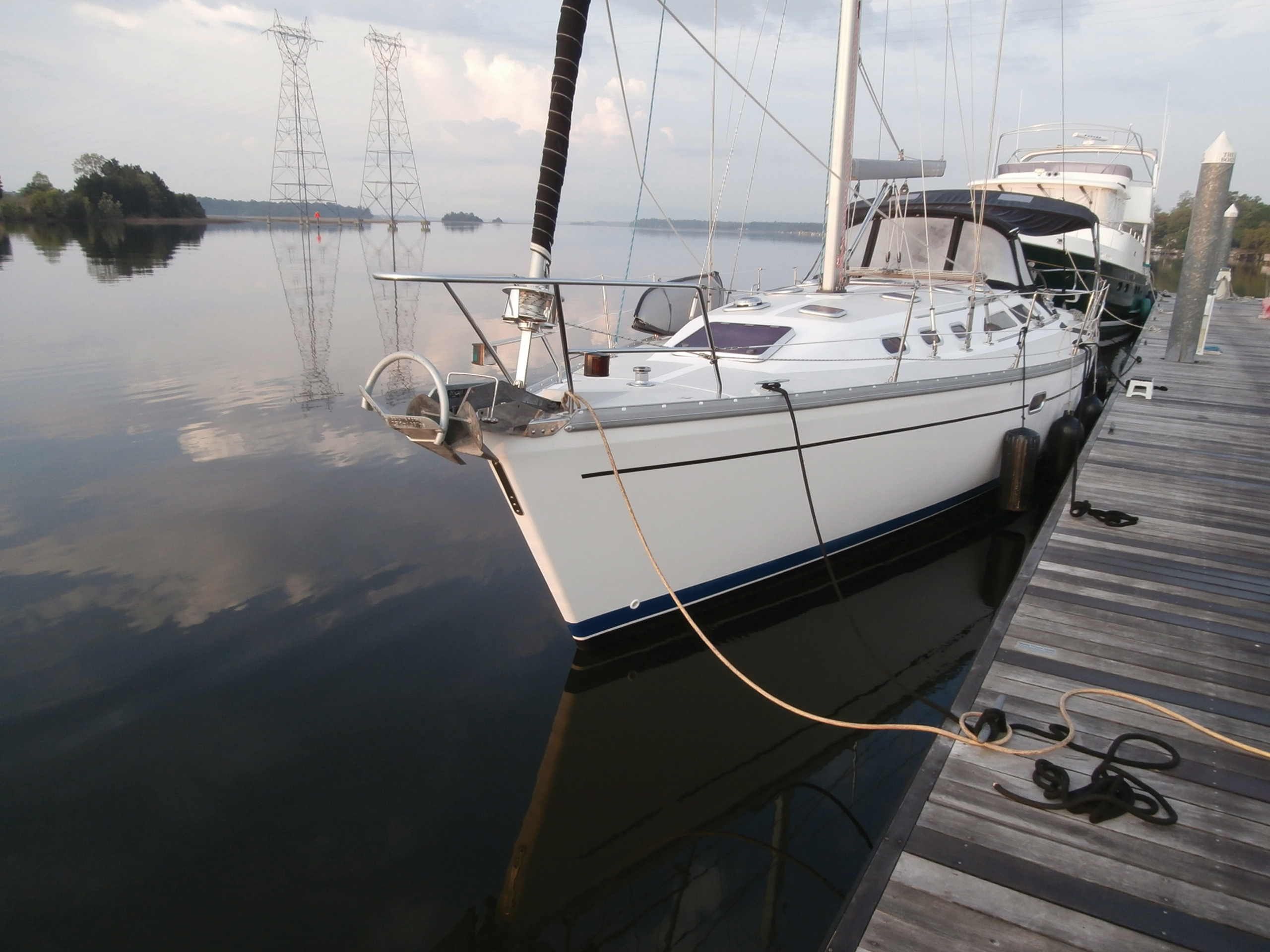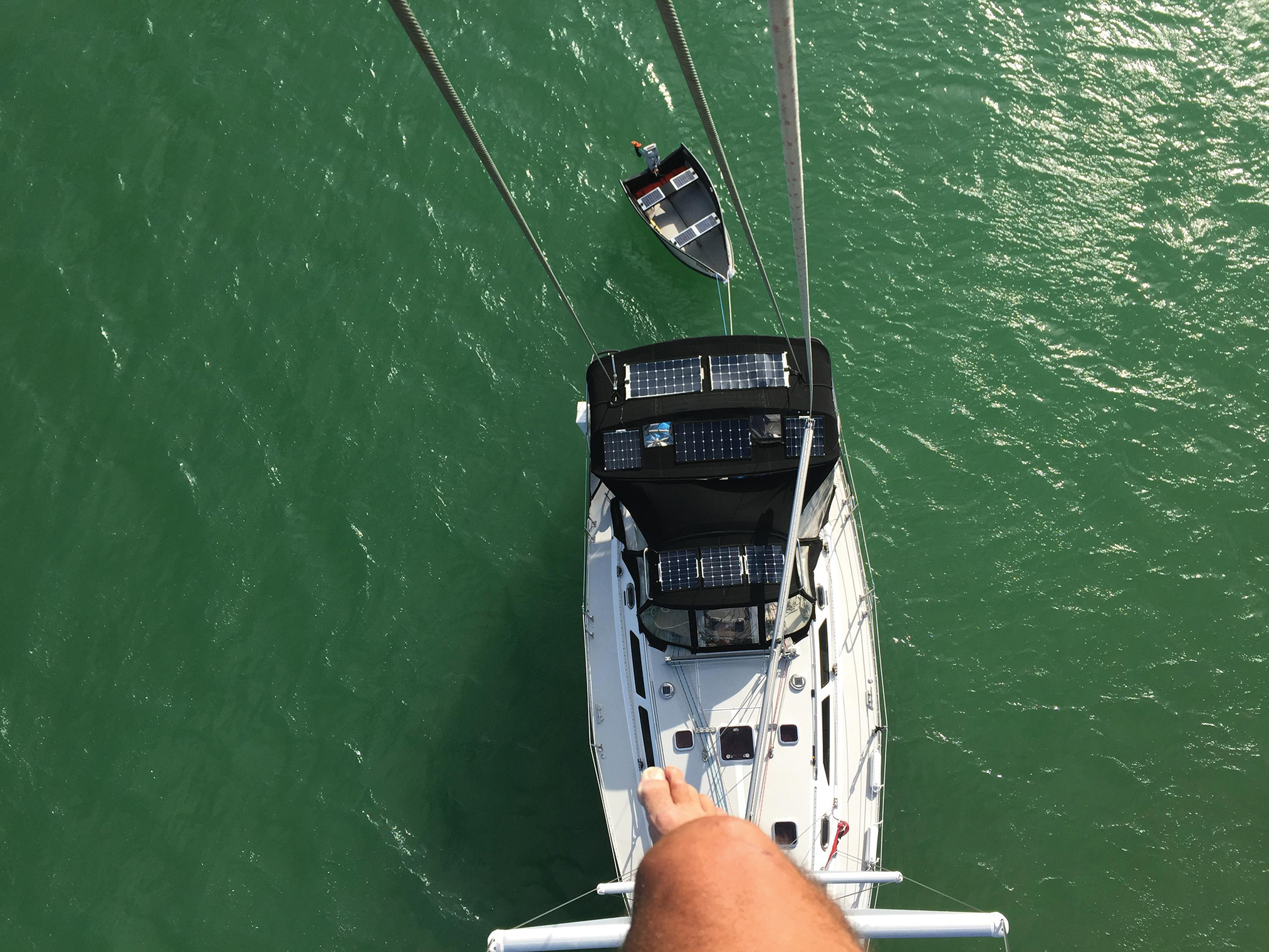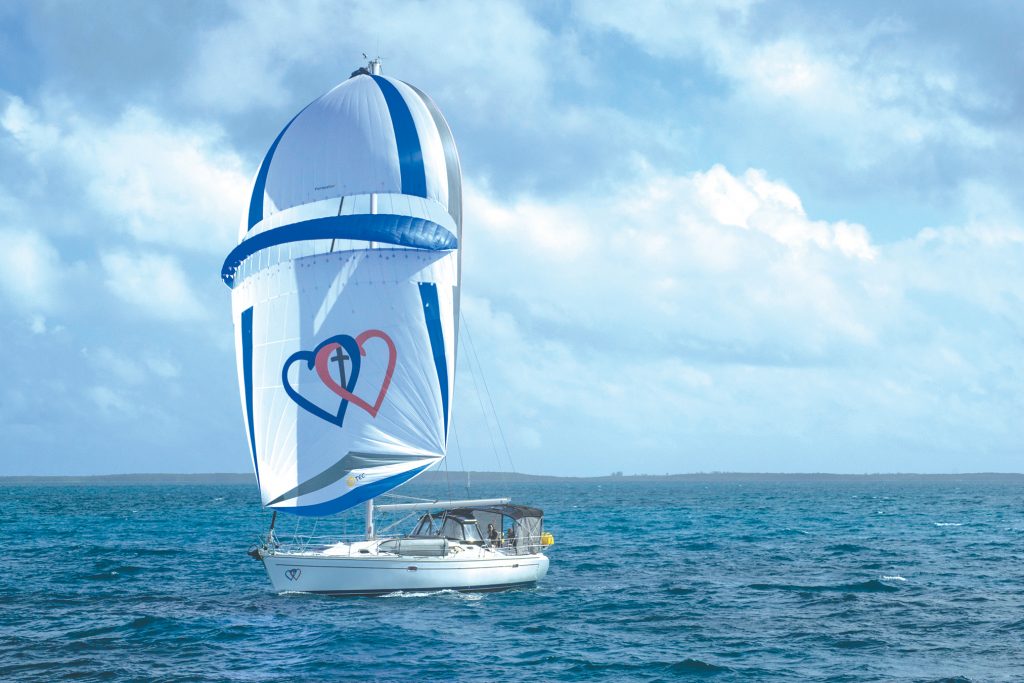Some not so obvious choices for the cruising sailor (published November 2016)
BEAT MOLD WHERE IT STARTS
Mold and sailboats go together, and everyone has their favorite anti-mold remedy. But, better than any mold remedy is to keep it from starting altogether. Mold loves heat and humidity, and one of its favorite starting points is right under the mattress where you sleep. Your body heat and respiration combine to form an ideal environment for mold formation whenever you spend the night aboard. First, avoid this with an “air pad” under your mattress, or better yet, a latex anti-mold topper and an “air pad” between that and the mattress. Second, but not quite as simple, is to thoroughly clean out and wipe down the entire boat at the end of each cruising season. Remove all paper, books, fabrics and anything that might hold moisture from the boat. Large items such as mattresses can be left on board, but at an angle to allow adequate air circulation while the boat is in storage.
These two insights are so easy and work so well, that we’ve never had to fight mold on our boat, except for that bit of mold that came with it on the purchase date.

AUTOMATE YOUR ANCHOR
With smartphones and tablet PC’s on every cruising sailboat, an automated anchor monitoring application is a must.
There is a wide selection of anchor applications, most of which are either free or cost just a few dollars. Best of all, most apps don’t require cellphone or internet service, but use the GPS already in your device. Since finding our favorite app, we sleep with the smartphone next to the Admiral and the tablet next to the Captain. When an alarm comes in, we first compare notes on the two devices and then spring into action as needed. The one other upgrade to our anchor strategy is to automate the anchor light. We upgraded to an LED bulb early on, but after forgetting to turn it on (or off!) more than just a few times, the next trip up the mast was to install an LED bulb with integrated sensor, automatically turning the anchor light on at dusk and off at dawn. Two very cost-effective solutions to automate your anchor experience, for next to no cost at all.
SLEEP WELL ON THE HOOK EVERY NIGHT
Your cruising sailboat surely came with an anchor when you bought it. Why, it might even have had an all-chain rode with it too. Our 40-footer came with a 33 pound Delta plow, to which we immediately added an all-chain rode. However, it didn’t take but one storm for us to decide that an anchor upgrade was in order. The numbers speak for themselves; 25,000 pounds of boat in 40 plus knots of wind, and held in place with a 33-pound plow? Dragging just once in the night was enough for us. Extensive research on anchor type and technique yielded just one conclusion, there’s no better investment than an oversized hook on the bow. For our 40-footer, we chose the 55 pound ROCNA as our primary and also carry a 45 pound Bruce as backup, both on 100 feet-plus chain rode. That might sound like overkill, but we’ve never again dragged and sleep really well at night too!

FEND OFF THE DRUNKEN MOTORBOATER
Every anchored sailor is at risk when the go-fast powerboats (or dinghies!) zoom home after a few drinks too many at the local watering hole. These go-fast boaters, and some go-slow ones too, are not navigating with an eye to the sky, looking for anchor lights and sleepy sailboats.
How to avoid being T-boned in the evening? Solar-powered garden lights, fastened to your boom or arch with sticky Velcro. The lights are just a few bucks, install in minutes, require no wiring and put the lighting right where the inattentive boater can see it. A side-benefit is that it’s now easier to find your own boat after a dinner outing, and you’ve also got some low-intensity lighting to find your way around on deck in case you’re still dragging with an undersized hook.
MINIMIZE THE SMELL
Let’s face it, all boats are small, too small for the smells of everyone’s personal business to escape notice by the others. In addition, hoses and holding tanks nearly always seep with the smells of rot and decay no matter how solid the hoses or double fittings may seem to be. The easiest (and free) thing to do to is to use only fresh water to flush the head. Fresh water doesn’t contain the bugs, organisms, creatures and critters that live in every cup of seawater, filtered or not. Adding a broad spectrum of things living in the seawater to a tank of human waste gives food to the hungry and encourages multiplication and growth, which then brings on additional wastes, dead things and more decay. No wonder the head flushed with seawater smells so bad!
Now you know why we use some of our precious fresh water to keep all things fresh with every flush. Of course, you already have a watermaker to replenish your supply, right?
KEEP ON COOKING WITH GAS
Propane is how we all fry, grill, bake and boil on board. For most of us, the source of that propane is a single tank, generally tucked away in an aft locker, out of sight. While some systems will have a pressure gauge included, they’re often just as tucked away and out of sight as the tank itself. So, except for the very diligent crew, nobody knows when the propane will run out until, one day, it suddenly does. One solution is to carry a couple of the green one-pound cylinders (and a $40 adaptor to connect them!), but the better answer is to split your propane holdings in two, carry 2 ten-pound propane tanks instead of a single twenty-pounder, or 2 five-pounders instead of a single ten-pounder.
Follow this strategy and now when you run out, you still have half your propane in reserve and a window of weeks to figure out a refill instead of just a couple of days, or worse yet, being stranded without any gas at all!

DISARM THE KILLER FRIDGE
The refrigerator on most boats is a gentle-looking beast tucked into the galley cabinetry like an innocent servant. Most often, it has both top and side doors for easy access to all the yummy contents.
Beware this beast! In most cases, the top lid on the fridge has a simple locking latch to hold the door open while inviting the unsuspecting foodie down into the interior for access to all the vittles.
However, the fridge is an energy hog and heavily insulated. Keyword: “heavily”. One wrong move and the heavily-insulated fridge door is nudged into action, a downward falling to cripple your arm, hand or fingers. It won’t take but one crack to your appendages to be convinced that the 10 dollar locking hinge used by the factory is well worth replacing with a 40 dollar gas cylinder, similar to what holds open the trunk of your car. Be proactive and make this 5-minute swap, don’t wait for your fridge to go on the attack!
ELECTRIFY YOUR DINGHY: TOSS THE JERRY CAN
With solar panels as effective and cheap as they now are, there’s no reason why every cruising sailboat shouldn’t carry 400-500 watts of solar panels, whether flexible panels sewn into the bimini or fixed panels mounted on the arch.

Cost-effective solar panels coupled with advanced lithium-ion battery technology are the perfect pair to replace fossil-fuel outboards in the 2-4 horsepower range with the modern electric motor and make the red jerry can of gasoline a thing of the past.
Consider the electric outboard. Quiet. Push-button start. Lightweight and clean. Never rebellious. And no jerry can of smelly explosive liquid on board! It sounds almost too good to be true, especially to the sailor with a sore shoulder from trying to start the gasoline engine! There are limitations of course, but the modern electric outboard with integrated battery has come a long way since your father’s trolling machine, and bears a closer look, under the right conditions.
DIVIDE AND CONQUER THE HOUSE
The leading cause of low battery performance and eventual failure is the cruising sailor’s inability to routinely bring the batteries up to 100% of charge and hold them there. Especially if you prefer sailing and anchoring, instead of motoring and overnighting in a marina. But one simple change can work wonders to improve battery performance. Split your house battery bank in two.
With the house bank split in two, you can operate the “active” side of the bank in the range of 65-85 percent, while allowing plenty of time to charge that last 10 percent on the “resting” side back to the 100 percent point. Also, since a lower-state-of-charge battery will accept a higher charge rate, your “active” side at 60 percent will accept more charge in the morning than the combined bank at 75 percent. So whether it’s solar or a short motoring trek to the sailing grounds providing the charge, more of the available charge is accepted more quickly.
Cruising sailors, divide and conquer to extend both battery performance and battery life!
Since purchasing their 2006 Catalina 400 some years ago, Roland and Elizabeth have motored and sailed her down the East Coast, around Florida and the Keys, and are now in the Bahamas. Ever the inventive engineer, Roland compiled a list of their favorite not-so-obvious improvements and techniques to make the cruising life just a little more convenient.















